#japanese rpgs
Text
20th Anniversary: Monster Hunter | Monday, 03.11.24
The Monster Hunter series turns 20 this year. What is your favorite Monster Hunter game in the series?
2004
Monster Hunter (PS2/Wii)
2005
Monster Hunter G (PS2) (Japan only)
Monster Hunter Freedom (PSP)
2006
Monster Hunter 2 (PS2) (Japan only)
Monster Hunter i (mobile phones) (Japan only)
2007
Monster Hunter Frontier Online (PC & Xbox 360) (discontinued in 2019)
Monster Hunter Freedom 2 (PSP)
2008
Monster Hunter Freedom Unite (iOS/PSP)
2009
Monster Hunter Tri (3DS, Wii, & Wii U) (Japan only) (PS3 version cancelled)
2010
Monster Hunter Diary: Poka Poka Airou Village (3DS/PSP) (Japan only)
Monster Hunter Portable 3rd (PS3/PSP) (Japan only)
2011
Monster Hunter Dynamic Hunting (Android/iOS)
Monster Hunter 3: Ultimate (Wii) (Japan only)
2013
Monster Hunter 4 (Nintendo 3DS) (Japan only)
Monster Hunter Frontier G (PC, PS3, PS Vita, Wii U, & Xbox 360) (Japan only) (discontinued in 2019)
2014
Monster Hunter 4: Ultimate (Nintendo 3DS)
2015
Monster Hunter Explore (Android/iOS) (Japan only)
Monster Hunter Generations (Nintendo 3DS)
2016
Monster Hunter Stories (Android, iOS, Nintendo 3DS, PC, & PS4)
Monster Hunter Frontier Z (PC/Xbox 360) (discontinued in 2019)
2017
Monster Hunter Genrations: Ultimate (Nintendo Switch)
2018
Monster Hunter: World (PC, PS4, & Xbox One)
2019
Monster Hunter World: Iceborne (PC, PS4, & Xbox One)
2021
Monster Hunter: Rise (Nintendo Switch, PC, PS4, PS5, Xbox One, & Xbox Series X | S)
Monster Hunter Stories 2: Wings of Ruin (Nintendo Switch/PC)
2022
Monster Hunter Rise: Sunbreak (DLC expansion)
2023
Monster Hunter Now (Android/iOS)
2025
Monster Hunter Wilds (PC, PS5, & Xbox Series X | S) (upcoming game)
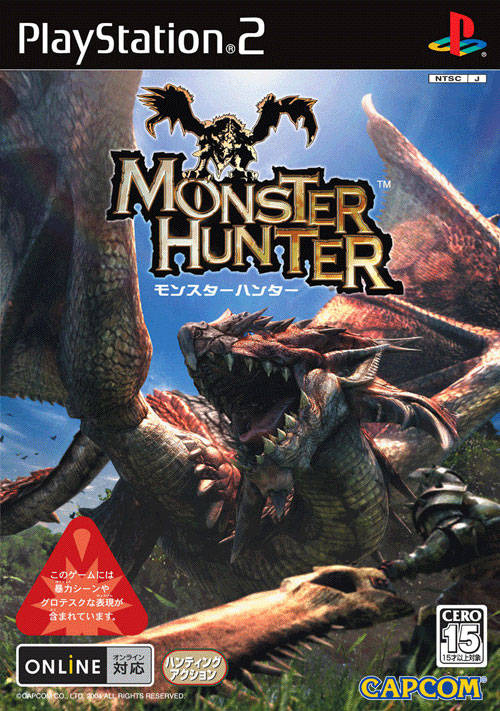
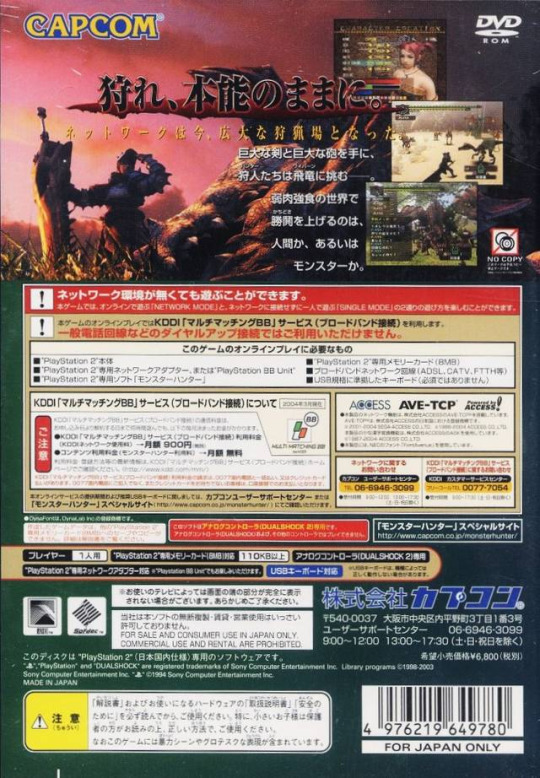
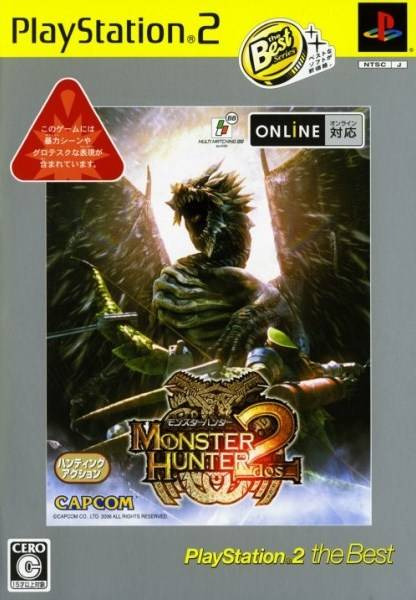
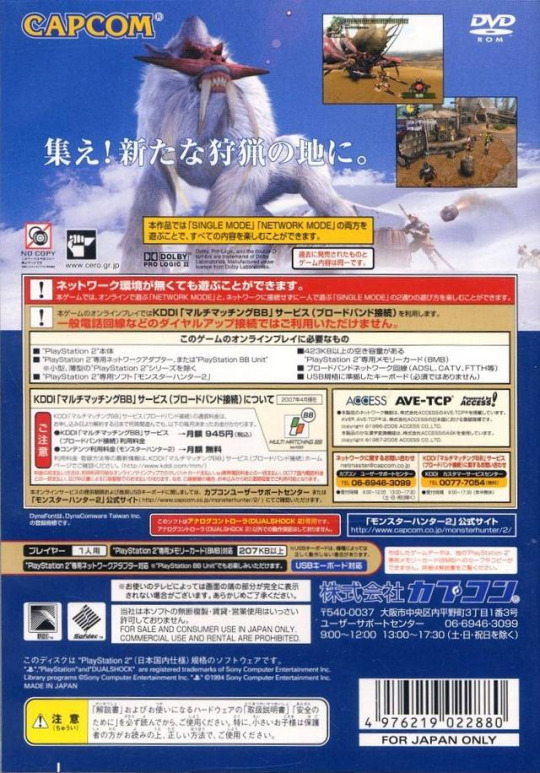
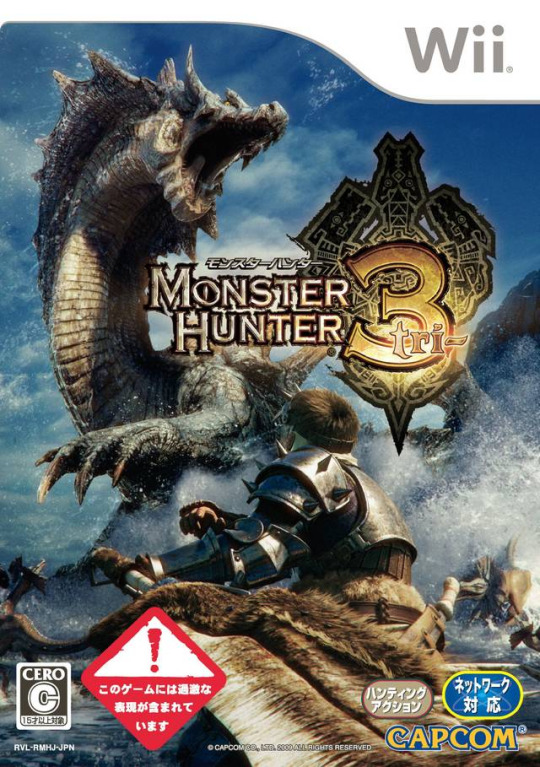
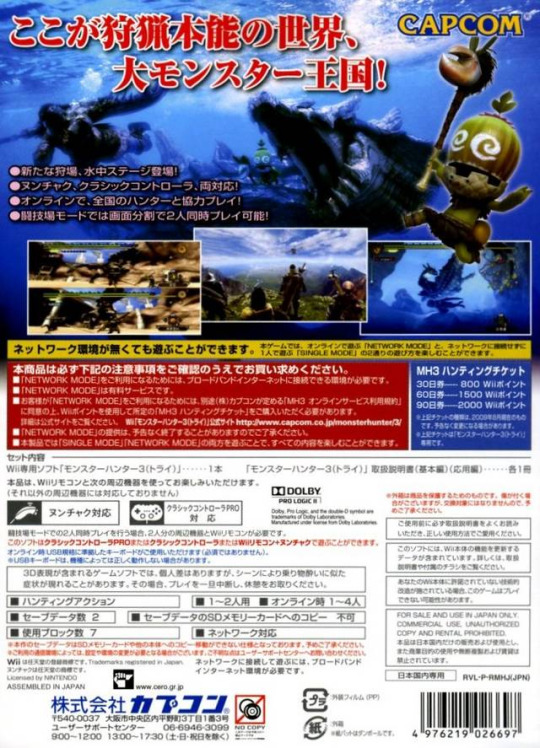

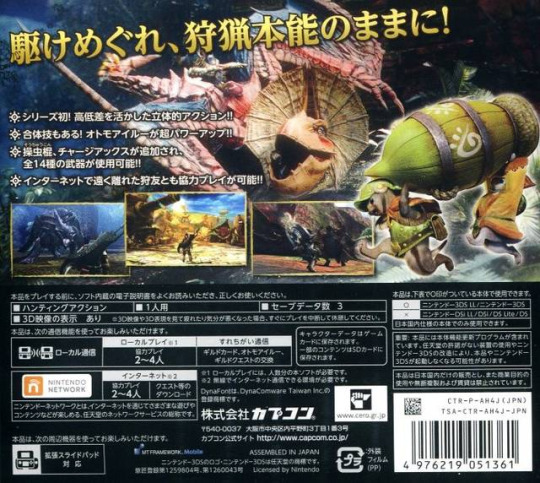
#20th anniversary#3ds#3ds games#action adventure#action games#action rpg#capcom#capcom games#japan only#japanese games#japanese rpgs#jrpg#jrpg games#march#march 11th#march 2004#march 2024#monday monday#monster hunter#monster hunter 3#monster hunter 4#ps2#ps2 games#video games#wii#wii games#プコン#モンスターハンター
2 notes
·
View notes
Text
DIGRESSIONS: Of Elves and Ears
Originally conceived of as a way to introduce Dungeons & Dragons to computer gamers, the Record of Lodoss War franchise casts a reasonably long shadow over Japanese pop culture: it helped bring fantasy fiction in the mainstream, played a major role in popularizing Japan's now-ubiquitous "light novel" format, and turned a not-insignificant number of newcomers onto the wonders of roleplaying.
In doing so, it also defined the aesthetic of Japanese Elves for an entire generation: the distinctive "bamboo ears" of its main heroine, Deedlit, have been copied countless times over, and still endure across a wide array of anime, manga, and game properties.
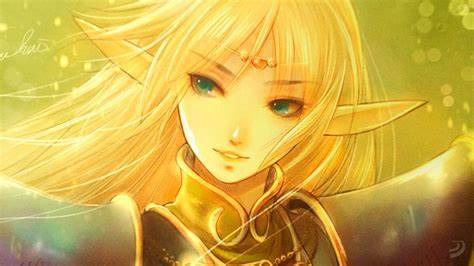
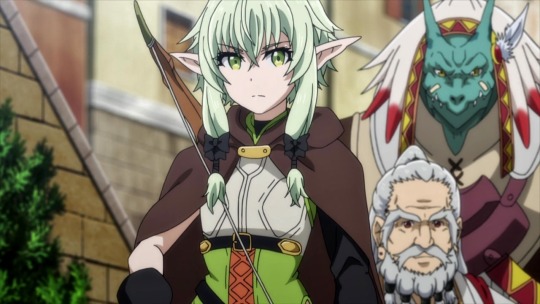
Almost 40 years later, “bamboo ears” are still a staple of Elven characters in Japanese media.
As it turns out, though, this particular flourish was mostly just a happy accident. When the first Lodoss campaign was serialized in Comptiq magazine, it was accompanied by illustrations from Yutaka Izubuchi (出渕 裕), an anime and manga artist who would later contribute mechanical design work to franchises like Gundam, Macross, and Mobile Police Patlabor.
As the story goes, when Izubuchi got his spec for Deedlit, he was informed that the character sported "long, pointed ears," but didn't receive any visual references to work off of. Apparently unfamiliar with classic depictions of Elves, Izubuchi instead used one of his own favorites as inspiration, modelling Deedlit's most defining feature after the Gelfling characters from Jim Henson's 1982 movie The Dark Crystal.

Viewed side by side, the Henson influence is more than obvious.
The rest, as they say, is history.
8 notes
·
View notes
Text
Team Xbox and Square Enix renew business relationship as Final Fantasy XIV Online gets set for Xbox Series X|S launch in 2024
Things have been turning out positively for Team Xbox and its millions of fans worldwide in recent times. Not so long after the big breakthrough for the Xbox-Activision-Blizzard deal and the launch of Antstream Arcade on Xbox, Team Xbox and Square Enix officially renewed their business relationship and symbolically it has been confirmed that Final Fantasy XIV Online got set for launch on Xbox…

View On WordPress
#America#amusement#Carlo Carrasco#Chrono Cross#Chrono Cross: The Radical Dreamers Edition#Double Dragon#Double Dragon Gaiden#entertainment#entertainment blog#fantasy RPG#Final Fantasy#Final Fantasy XIV Online#Forza Motorsport#Forza Motorsport (2023)#fun#gamers#games#geek#Japanese RPGs#JRPG#JRPGs#massively multiplayer online role-playing game (MMORPG)#MMORPG#Naoki Yoshida#news#online games#online gaming#online RPG#Phil Spencer#PlayStation
2 notes
·
View notes
Text
Ys Origin
I was very impressed with this game.
A knight’s apprentice, a wizard, and a claw-man walk into a tower… Nihon Falcom is a relatively small-staffed developer of RPG series such as The Legend of Heroes and Ys, with many entries, particularly in the latter pantheon, not seeing the light of day in North America. However, after the turn of the millennium, their games would release outside Japan thanks to the efforts of localization teams…

View On WordPress
#9.5#9.5/10#action roleplaying game#action roleplaying games#action rpg#action rpgs#dotemu#falcom#game#game review#game reviews#games#gaming#japanese roleplaying game#japanese roleplaying games#japanese rpg#japanese rpgs#jrpg#jrpgs#nihon falcom#playstation 4#ps4#review#reviews#video game#video game review#video game reviews#video games#video gaming#writing
0 notes
Text

mad father fanart
#horror#artists on tumblr#japanese#japanese horror#mad father#rpg#horror rpg#fanart#horror games#ps2 nostalgia#nintendo#resident evil#silent hill#corpse party#digital horror
489 notes
·
View notes
Photo
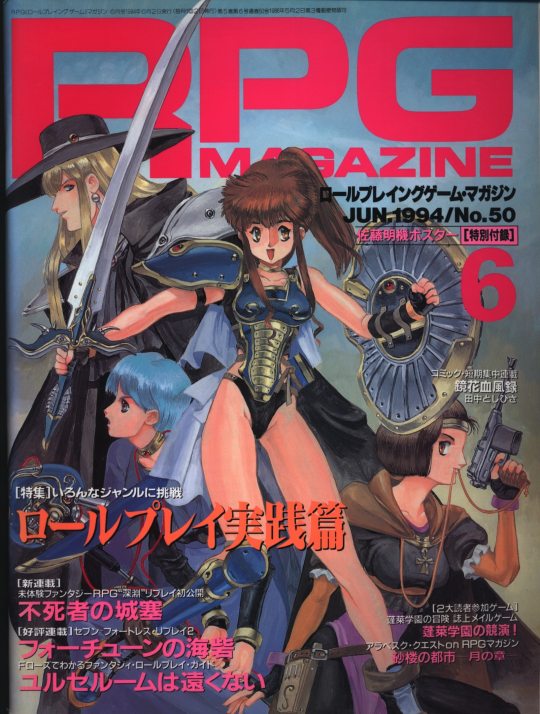
RPG Magazine, source
247 notes
·
View notes
Text
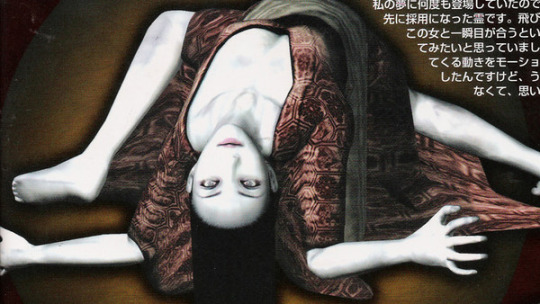
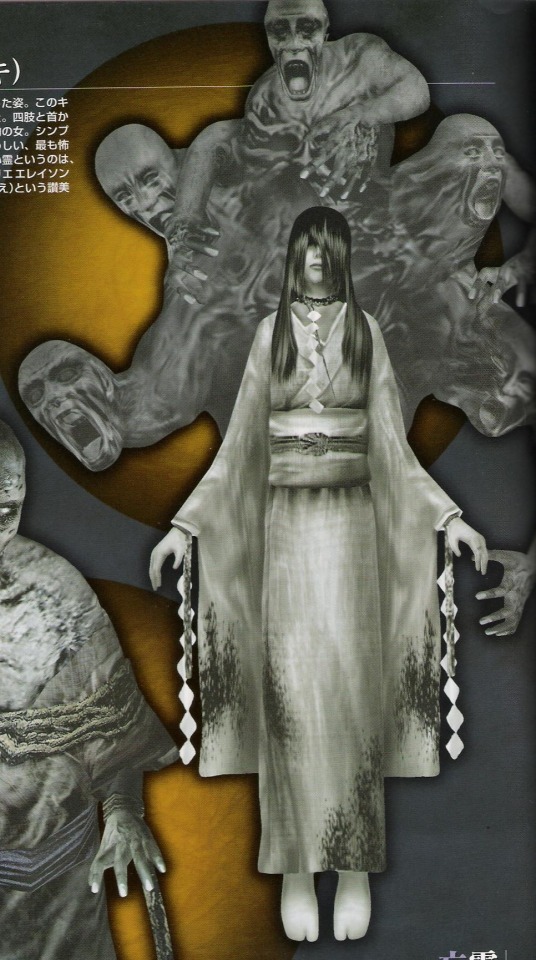
Falling Woman of Fatal Frame 2: Crimson Butterfly, and Kirie Himuro, the main antogonist in Fatal Frame/Project Zero
#falling woman#kirie#kirie himuro#fatal frame#project zero#fatal frame 2#fatal frame crimson butterfly#crimson butterfly#playstation#playstation 2#playstation games#horror survival#horror rpg#horror gaming#horror video game#scary video game#creepy#horror#japanese horror#japanese ghost#ghosts#evil spirits#ps2#90s#90s gaming#2000s gaming#video game#gamer#tecmo#koei tecmo
2K notes
·
View notes
Text


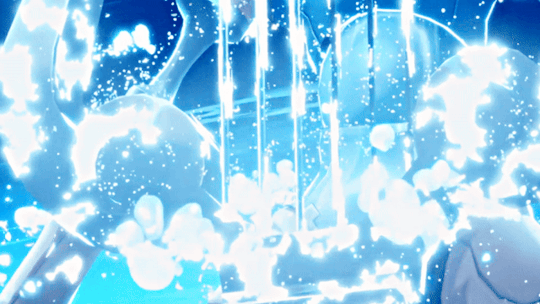
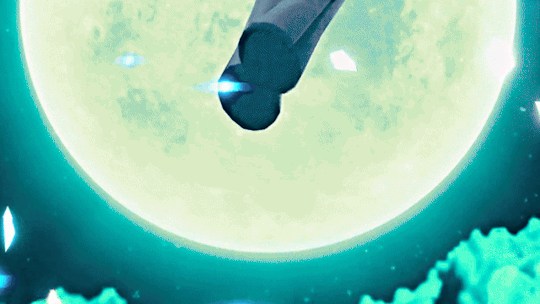

Persona 3 Reload ペルソナ3 リロード (2024) dev. Atlus
#lemongifs#persona 3 reload#ペルソナ3 リロード#jrpg#japanese rpg#video game#game gif#dailyvideogames#videogameedit#gamingedit#persona 3#finally getting to play p3r#too many good games coming out this year I can barely keep track as it is lol#first yakuza 8 then p3r and next will be ff7r p2#I hope I can finish p3r before ff7r p2 comes out
355 notes
·
View notes
Text







🫀Dead Celebration 🦴
#corpse party#gurokawa#otakucore#gurokawaii#animecore#soft guro#light guro#rpg horror#japanese horror#horror#horrorcore#anime horror#ps1 horror#g0r3c0r3
940 notes
·
View notes
Text
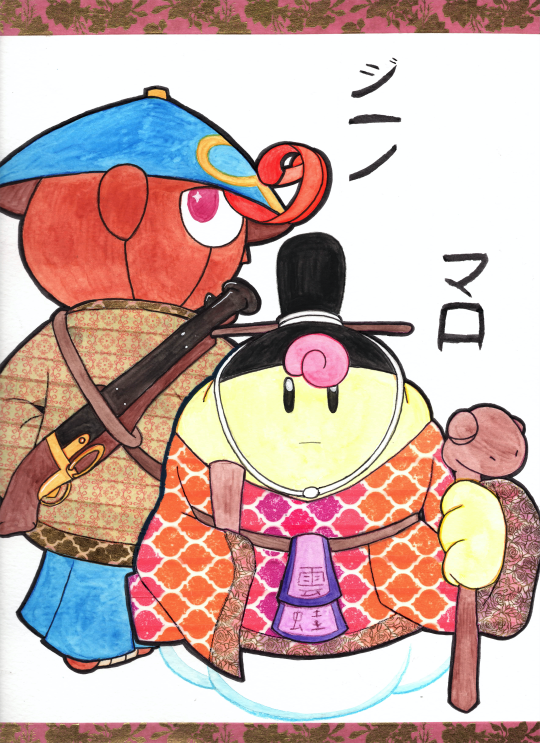
Experimenting with washi-tape. Oy vey.
#super mario rpg#mallow#geno#Japanese outfits#I don't like how this turned out#but I needed to post something
43 notes
·
View notes
Text


Sylvanian Families GBA
#uploads#kidcore#kidwave#sylvanians#sylvanian families#calico critters#my gifs#retro gaming#gba games#japanese rpg
56 notes
·
View notes
Text


#Yamazaki Kento#japanese model#japanese actor#japanese faceclaim#400*640#rpg#200*320#avatars#avatar#200x320#400x640#ressources#ressources rpg
29 notes
·
View notes
Text
Indie Roleplaying in Japan
Independent RPGs are a vital, vibrant part of the Japan's tabletop scene, both a movement in their own right and a talent incubator for publishers on the prowl for the next big thing. That said, this prominence is a relatively recent shift: during the boom years of Japanese roleplaying, indie titles existed on the margins of the market, produced by die-hards for die-hards. It would take the near-death and resurrection of the tabletop industry - and several decades of persistence - for these creators to finally get their due.
The Fandom Factor
Like most independent RPG scenes, Japan’s indie output is split into original and derivative works. This in itself isn’t especially noteworthy: after all, a good chunk of the global small-press market is dominated by third-party releases for existing systems, ranging from mainstream juggernauts like Dungeons & Dragons to cult faves like Mörk Börg or Mothership.
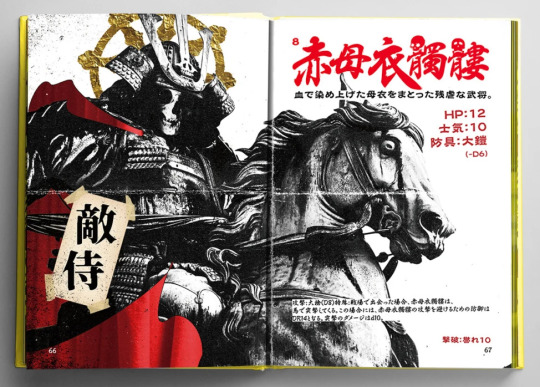
Such as 2022′s Nobunaga's Black Castle, Japan’s first venture into the realms of black metal fantasy.
What is notewothy is how the Japanese RPG scene has dealt with derivative products - especially the unauthorized ones.
In the West, piggybacking on an established system or property has always been fraught with a certain amount of legal peril. The ‘80s and '90s in particular saw an assortment of dust-ups between big-name publishers like TSR and Palladium Books and smaller creators - particularly fansites - over both actual and imagined IP violations. Things shifted significantly with the introduction of the D&D Open Game License (OGL) in 2000, which allowed third parties to produce D&D-related content without having to pay fees or royalties. However, these products still had to adhere to an explicit set of guidelines - one that could force an incautious company to pulp an entire print run of books.
By contrast, Japan’s rights holders historically didn't fuss much over derivative works, even ones sold for money, unless the infringement was particularly egregious. This resulted in the creation of a massive gray market of for-profit fanworks that has grown to annual sales in the region of US$800M - a not-inconsiderable chunk of Japanese otaku spending. Semi-protected as “parodies” in the eyes of the Japanese law, these products take various popular or nostalgic IPs and spin them off into new directions - respectful, comedic, pornographic, and everything in between.
While the overwhelming majority of for-profit fanworks are comics or comic-adjacent material like artbooks, RPGs also carved out a niche in this market through unofficial supplements, adventures, and even entire roleplaying systems. Largely unconstrained by legal worries, Japanese tabletop fans could produce IP-infringing double whammies like 1993′s Dark Kingdom: a thoroughly unlicensed sourcebook that imports the cast of pop culture evergreen Sailor Moon into TORG, West End Games’ RPG of fractured realities.

Dark Kingdom was an early showcase for Jun'ichi Inoue (井上純一), who would later enjoy a fruitful career at FEAR creating notable titles like Tenra Bansho (天羅万象 ) and Alshard (アルシャード). [IMAGE: Dragoon_Shaytan via Twitter]
Over the years, other popular IPs inevitably also got the tabletop treatment, resulting in fan-made adaptations of everything from ’80s anime relic Dream Hunter Rem and classic shoot-’em-up R-Type to contemporary megahits like Fate/stay night and Bleach. Even today, it’s possible for a creator to knock out an RPG based on Dragon Quest - one of Japan’s largest and most prominent roleplaying franchises - and put it on a digital storefront for US$16 without immediate fear of a thermonuclear-level copyright strike.
However, until around 2010, these sorts of derivative works were more of a sideshow than anything else. That changed once Call of Cthulhu established itself as Japan’s best-selling RPG, buoyed by a series of popular - and irreverent - actual play videos and the Mythos-Goes-Harem antics of the Nyaruko: Crawling with Love media franchise. Suddenly, freshly-baked Cthulhu fans were appearing at gaming conventions in increasing numbers, resulting in a corresponding boom in fan-made CoC adventures and supplements.
As Call of Cthulhu grew to dominate the local tabletop industry, its fanworks cast an equally long shadow over the indie scene, eventually accounting for an estimated 80 to 90% of all derivative products on the market. This extreme popularity would have repercussions: in 2021, facing pressure from the game’s creators, Chaosium, CoC licensees Arclight joined forces with Japan’s most prominent RPG companies to create the Small Publisher Limited License (SPLL) program, which set content guidelines and royalty fee requirements for any third party publishing material for an established system. This was an unusual arrangement by Japanese standards, though one that also gave new legitimacy to derivative works within the roleplaying community.

As was the case with D&D, Call of Cthulhu’s rules have been used as a springboard into other game styles and genres. For instance, the Magic Academy CoC (魔法学校CoC) series reworks Chaosium’s system to accommodate Harry Potter-ish adventures.
An Interlude on Doujin Culture
Derivative works are just one facet of Japan’s indie RPGs, but an important one to start with - in large part because the impact of the Japanese fanwork scene extends much further than just Sailor TORG.
Thus far, when I’ve used the word “fanwork,” it’s been to refer to what the Japanese would formally call “doujinshi.” In the West, that term is intimately associated with fan comics, especially pornographic ones, but the word simply refers to any independently created and published print product - more specifically, one put out by a doujin (同人) or “circle” of like-minded individuals.
The doujinshi concept dates back to the 19th century, but only truly gained traction in the 1980s - a point where more affordable, accessible printing options made it possible for enterprising hobbyists to produce and sell comics as a full-on side gig. As the number of indie creators grew, events emerged to give these artists and writers a venue to market their wares - chiefly Comic Market, which began as a modest volunteer-run show in 1975 but would eventually grow into the world’s largest comics event by a significant margin.
As the doujinshi market grew in size and scope, a new generation of printing companies emerged to serve this subculture through cheap, high-quality digital printing and low minimum order quantities. This further reduced barriers to entry, giving even amateur artists access to professionally bound products at an manageable price.
This ecosystem of affordable production and dedicated sales events created a vital foundation for Japan’s indie roleplaying groups - and a sorely needed one, as up until the mid-‘90s, the cost and complication of producing RPG products kept independent releases relatively scarce. As a result, early offerings like Bläde & Wörd (ブレード アンド ワード), ITHA WEN Ua ( イサー・ウェン=アー), and Small Still Voice (スモール・スティル・ボイス) played it safe by skewing toward orthodox Western-style fantasy - and largely sank in the market with scarcely a ripple.
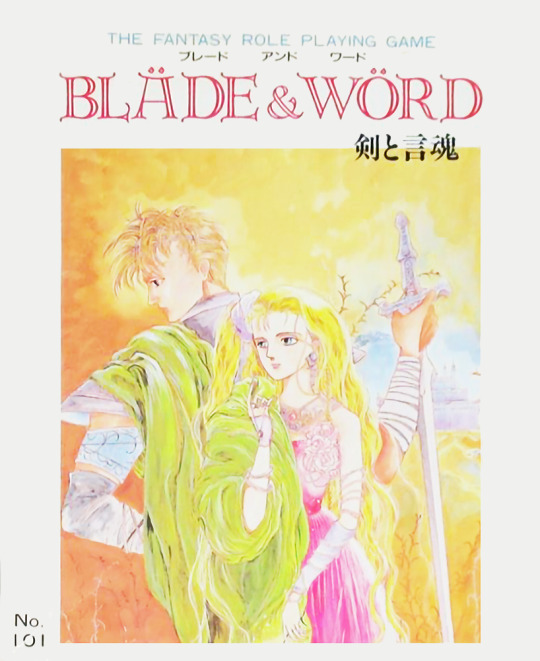
Thanks to its multifaceted magic system, 1991′s Bläde & Wörd enjoyed somewhat more longevity than its fellows, eventually spawning a second edition under the somewhat unlikely title of “Acoustic Leaf“ (ブレード アンド ワード) in 1995.
The ability to source cheaper, better-looking books at lower order quantities arguably helped RPG creators shake loose some of this conservatism - perhaps best exemplified by 1996′s Karma Saturday Night Special, later known by the shorter, punchier alias “Satasupe” (サタスペ). Set in an alternate history where the United States did not enter World War II and a nuke-ravaged Japan found itself divvied up by various superpowers, this gangster RPG dunks its players into a gonzo stew of Soviet narcotics farmers, voodoo practitioners, Japanophile mercenaries, biking Crusaders, criminal animal handlers, UFO cultists, and more besides.
Satasupe’s creators, “Jail House,” started off as a loose-knit collective with almost a dozen credited members, building up their audience and reputation over several years before striking paydirt with 1999′s SATASUPE Remix99 (サタスペ・リミックス99). Remix99 would prove popular enough to attract attention from the wider industry, and in 2003, a revised and expanded version called Satasupe REmix+ ( サタスペ・リミックス+) earned a release through Hobby Base, the publishing arm of the game store chain Yellow Submarine.
To clean the game up for its commercial debut, Jail House partnered with Adventure Planning Service, one of Japan’s oldest RPG design companies. The collaboration proved so fruitful that Jail House was effectively absorbed by APS, and Satasupe’s lead designer, Toichiro Kawashima (河嶋陶一朗), would quickly become one of the company’s most important creators, spearheading future hits like Labyrinth Kingdom (迷宮キングダム) and the now-ubiquitous Saikoro Fiction line.
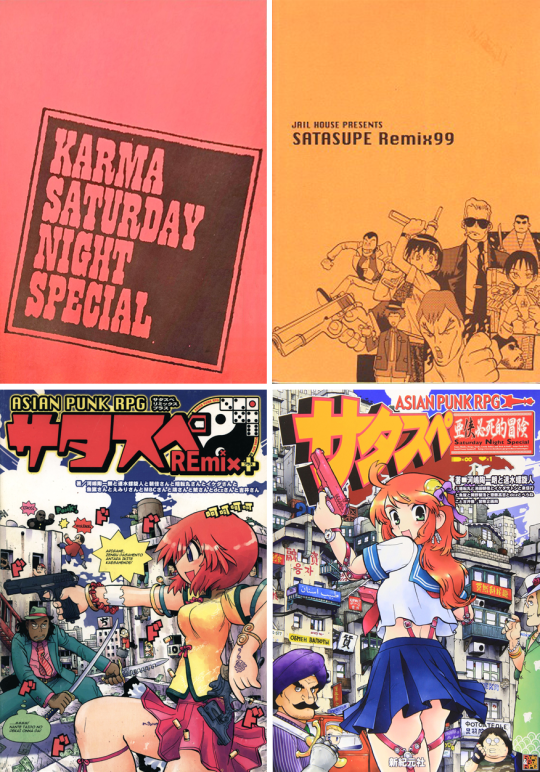
The evolution - and professionalization - of Satasupe’s rulebooks doubles as a mini-history of Japanese indie roleplaying as a whole.
A Rising Tide Lifts All Boats
On the whole, the early 2000s were a transformative time for independent roleplaying. In the West, the third edition of Dungeons & Dragons made its debut alongside the Open Game License, which unleashed a new generation of hobbyists and small publishers eager to capitalize on the excitement generated by D&D’s first major new edition in 11 years. Around the same time, independent RPG creators also began establishing their own distinctive culture and philosophy, driven by influential online discussion forums like The Forge. And behind the scenes, indie creators of all stripes benefitted from the growing availability of sophisticated desktop publishing software, which continuously narrowed the aesthetic quality gap between “amateur” and “professional” games.
In Japan, the OGL attracted significantly less direct interest, though it would eventually inspire comparable “open-source” systems like FEAR’s Standard RPG System (SRS) and Adventure Planning Bureau’s Saikoro Fiction. A more notable development was the introduction of FEAR’s Game Field Awards in 2000, which allowed aspiring designers to submit board, card, and roleplaying games to the company for potential commercial publication. This proved to be an important new outlet for independent creators, and helped birth notable titles like 2005′s TORG-inspired Chaos Flare (異界戦記カオスフレア) and 2001′s Double Cross (ダブルクロス), which is credited with helping to establish the more systematized approach used by modern Japanese RPGs.
2000 also saw the debut of Game Market - or “Gema” for short - a twice-a-year event that positioned itself as a Comic Market equivalent for analog hobbies. Though Gema’s foot traffic was only a fraction of its role model’s, the show would gradually establish itself as a go-to for unveiling new RPGs, especially once stewardship of the event passed to Call of Cthulhu licensee Arclight in 2010.
2010, in fact, seems to be generally regarded as the true starting point for Japan’s modern indie RPG scene - thanks again to the CoC craze, which not only produced a mountain of derivative products, but dramatically changed the size and demographics of Japan’s roleplaying fandom by drawing in both younger gamers and female players. This expanded audience appears to have to encouraged a greater diversity in game design and themes - less anime-inspired power fantasy, more high-concept exercises like “what if the players were actors in a movie production scrambling to finish shooting with no script and no budget before the whole project implodes?”
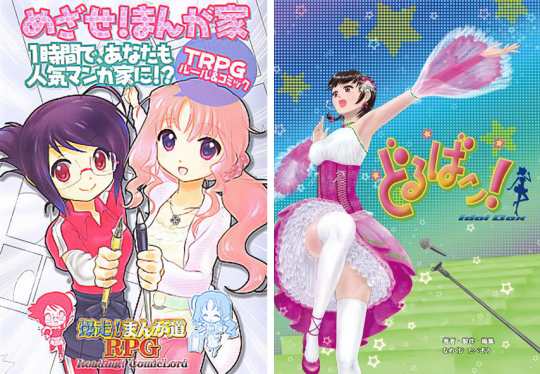
2012′s Reading! Manga Lord (爆走!まんが道) and 2013′s Idol Box! (どるばこ!) exemplify the indie scene’s broader swing towards less traditional RPG topics after 2010.
Surprisingly, some of this mindset even spilled over to Japan’s two biggest RPG publishers, Kadokawa and Shinkigensha - as evidenced by the fact that Satasupe received a mass-market release through the latter in 2008, eventually followed by other oddballs like the youth band RPG Strato Shout (ストラトシャウト) and Mofumofu Stream (もふもふストリーム), a game about YouTubers fighting crime with their psychic pets.
A final notable development in the indie scene was the emergence of online storefronts for independent RPG releases. While digital publishing has slowly become more prominent in the Japanese tabletop market, physical copies still dominate the indie space and groups invariably end their events with unsold game stock that needs to be offloaded elsewhere. The launch of Cokage in 2014, followed by Conos in 2016, provided an important outlet for excess copies and doubled as a means of making small-press games accessible to fans in rural areas who wouldn’t normally be able to attend a sales event.
Notable Creators
There’s an enormous quantity of indie circles currently active in the tabletop space, with more joining the fray on a monthly basis. A comprehensive list of every group is a bit beyond the scope of this post, but let’s take a quick look at a few of the longer-running ones:
Draconian: Originally a partnership between system designer Fuyu Takisato (瀧里フユ) and worldbuilder Shio Botan (潮牡丹, AKA Darya Tide), Draconian began publishing in 2014, gradually taking on more members to become a five-person operation capable of releasing multiple games per year. In 2018, the group officially crossed over into mainstream publishing with Silver Sword: Stellar Knights (銀剣のステラナイツ), a two-player RPG distributed by Kadokawa. Since then, the circle has put out several more titles through both Kadokawa and Shinkigensha while continuing to self-publish its more experimental work.
Draconian’s titles tend to focus on questions of identity, reality, and relationships with others, typically in fantastical or post-apocalyptic settings. Its more combat-intensive games share a battle system known as Diaclock, which was made openly available for use by other creators in 2020.
youtube
In recent years, Kadokawa have begun experimenting with promotional trailers for their RPG releases - in this case for Stellar Knights.
Phantasm Space: Founded in 2014, Phantasm Space is responsible for the steampunk aerial exploration game Skynauts (歯車の塔の探空士<スカイノーツ>), the Porco Rosso-inspired Il Paradiso Celeste dei Cacciatori Extro (チェレステ色のパラディーゾ), pastoral fantasy title Floria: The Verdant Way (翠緑のフローリア), and the comedic Villain’s Quest (ヴィランズクエスト). All four games have a lighter tone and showcase unusual ideas and mechanics; Villain’s Quest, for instance, throws its anti-heroes into pitched strategy meetings where participants use cards to advance various proposals; eventually, things climax in an analog tower defense game as the players scramble to protect their evil master from being slain once more.
The circle’s leader, Lord Phantasm, went pro in 2020 by joining Adventure Planning Service under the pen name Eisuke Nanashi (中西詠介). In 2021, Nanashi and APS published a revised version of Skynauts through Kadokawa. That same year, Floria also received an English-language translation courtesy of Silver Vine Publishing.
youtube
Another Kadokawa trailer, this time for the 2021 edition of Skynauts.
Rommel Games: Though Rommel Games began publishing RPGs in 2013, the group’s big breakthrough would come the following year with Galaco and the Tower of the Broken World (ガラコと破界の塔), a mecha dungeon crawler set on a distant planet. The game’s slick, commercial-level production values made an immediate splash in the RPG scene, and a number of indie creators readily credit Galaco as an influence on their own work.
In 2017, Kadokawa picked up the circle’s fast-paced superhero title Deadline Heroes (デッドラインヒーローズ), which was followed by a villain-focused version entitled Black Jacket (ブラックジャケット) in 2019. The line’s success may be attributed in part to the buzzy My Hero Academia franchise, which made its anime debut in 2016 and continues to enjoy a dedicated following in Japan.
--
New Game Plus: This collective of young game designers has maintained a healthy and eclectic output since first appearing on the scene in 2018, with titles that include Night Butterfly ( ナイトバタフライ ), an RPG about male nightclub hosts, and the aforementioned Mofumofu Stream.
Calling NGP an indie circle may be a bit of a stretch - the majority of its titles have in fact been released through Shinkigensha - but the group does put out the occasional doujin game. Sadly, its founder, former Group SNE associate Rikizo (力造), passed away from pancreatic cancer in 2020.
--
Shiawase Training Ground: Formed by systems engineer Go Yamauchi (山内剛), Shiawase Training Ground has been actively releasing material since 2014, producing offbeat titles like the medieval peasant survival sim Hoshikuzu Village Story (ホシクズ村々物語) and restaurant-focused A La Cuisine (アーレ・キュイジーヌ). Yamauchi’s upcoming “travel and escape” RPG We Will Happiness! (ウィーウィル・ハピネス!) has reportedly ended up with Adventure Planning Service, suggesting his mainstream breakthrough may be just around the corner.
2 notes
·
View notes
Text
Have you been playing Eiyuden Chronicle: Hundred Heroes?
Welcome back Xbox fans, geeks and gamers! It has been over a month since Eiyuden Chronicle: Hundred Heroes was launched on multiple platforms worldwide and like many other gamers who are currently subscribed to Xbox Game Pass (XGP), I downloaded it and played it a lot although there were a some technical setbacks that happened along the way.
For the newcomers reading this, Eiyuden Chronicle:…

View On WordPress
#505 Games#amusement#Asia#Assassin’s Creed#Blog#blogger#blogging#Carlo Carrasco#diversity#entertainment#entertainment blog#fantasy#fantasy genre#fantasy RPG#fun#gamers#games#games blog#gaming#geek#Genso Suikoden#Inclusion#Japanese RPGs#JRPG#JRPGs#Konami#Rabbit & Bear#Resident Evil#Resident Evil 4#role-playing game
0 notes
Text
Pokémon Violet
Game review #5 of the year.
Tears of the Pokémon Region
Nintendo and Game Freak’s Pocket Monsters, known as Pokémon outside Japan and the brainchild of developer Satoshi Tajiri, has steadily evolved from its roots on the Game Boy system, each new generation attracting multitudes of players, and I’ll admit I didn’t get into the series until it reached the Nintendo DS. Despite being on the autism spectrum like the series…

View On WordPress
#7.5#7.5/10#game#game freak#games#gaming#japanese roleplaying game#japanese roleplaying games#japanese rpg#japanese rpgs#jrpg#jrpgs#nintendo#nintendo switch#pocket monsters#pokemon#review#reviews#switch#video game#video games#video gaming#writing
0 notes
Note
Hey girl! Ive seen ur MLP fanart, and I was wondering what you thought about all of the infection Au's? Are you planning on making one? You are like my favorite person ever, i watched The Batman because of you and it changed my life.
I love this trend and because of my re-discovered love of horror RPGs I’d love to do an infection AU but in the Highschool with the equestria girls similar to Corpse Party. I unfortunately suck at digital art so a lot of what I want to do is unachievable in traditional art :( I did draw something for this idea already though I also put in some examples of what I’m talking about.



307 notes
·
View notes